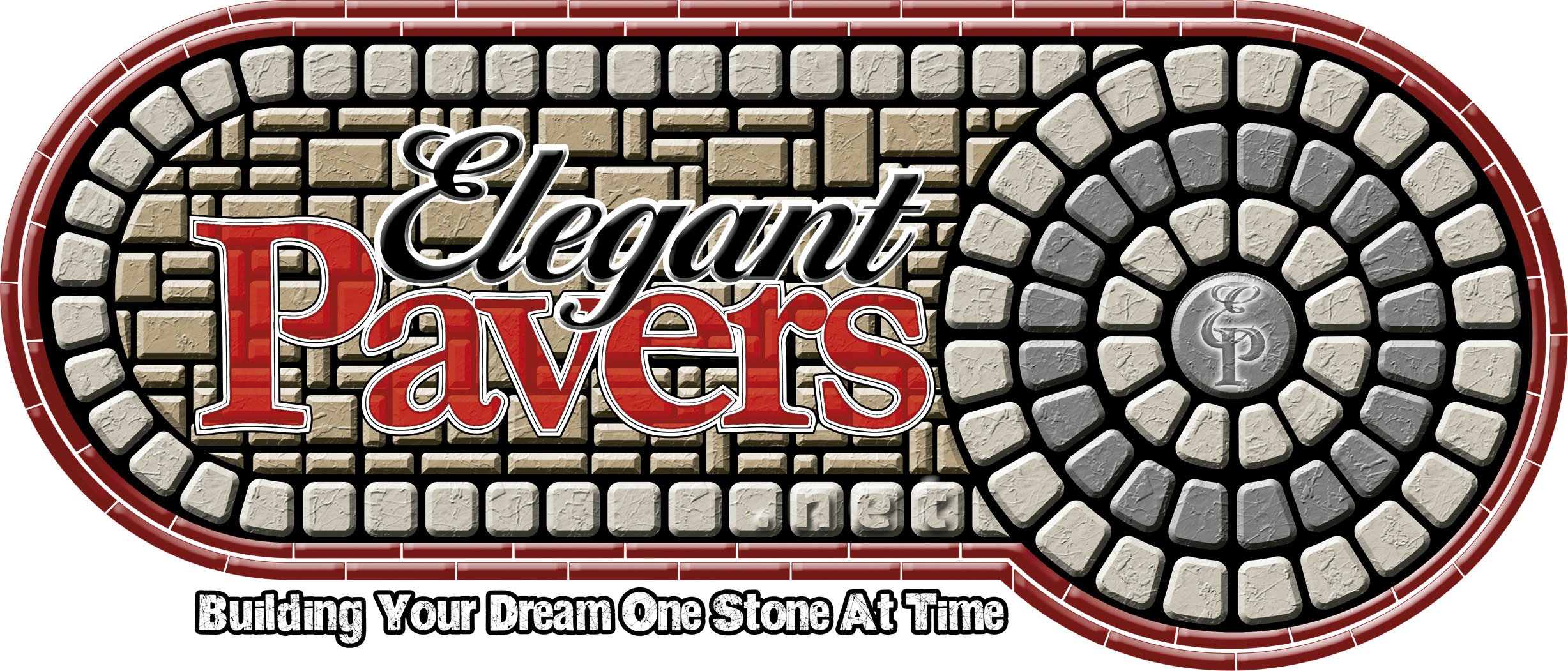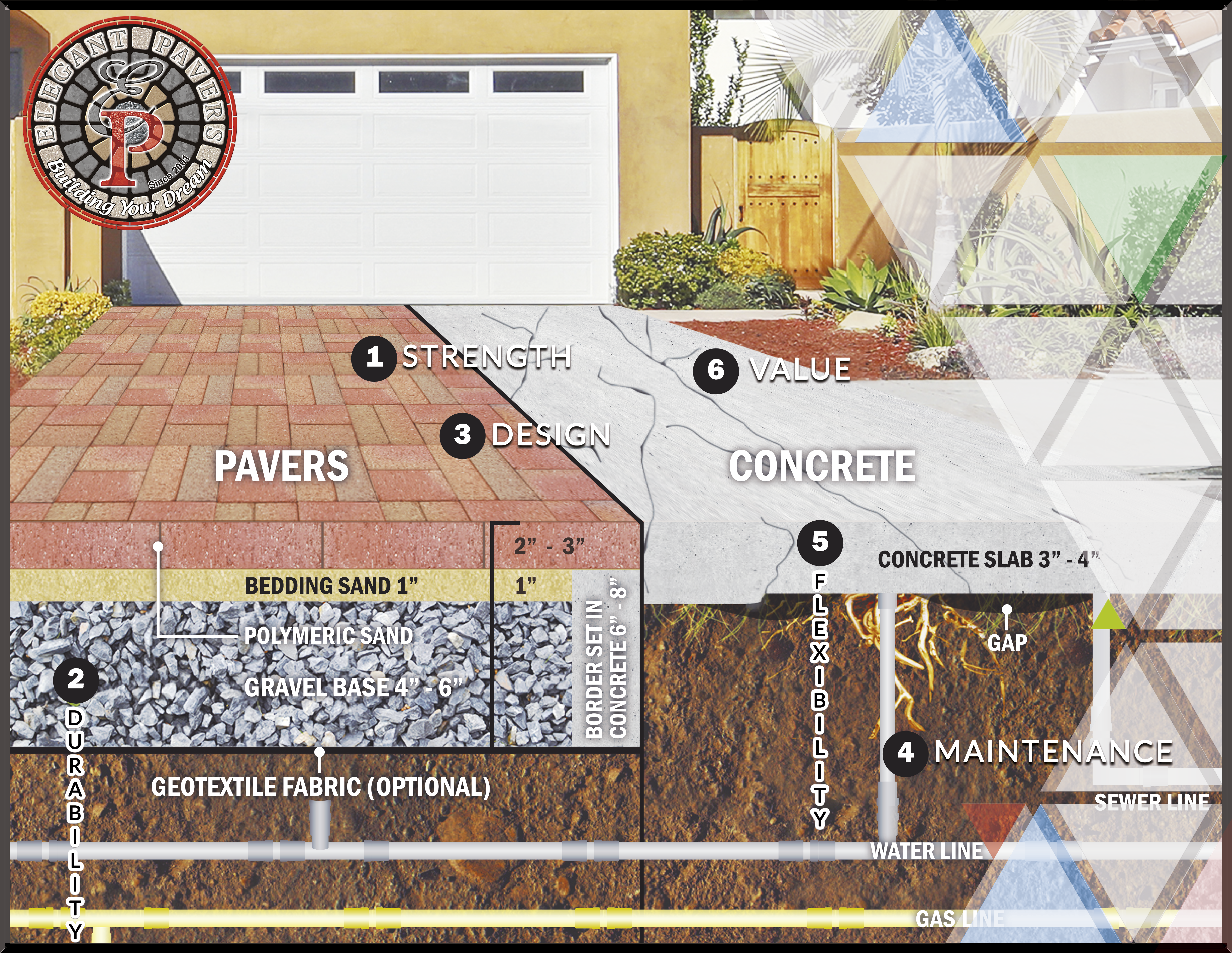

In Elegant Pavers we will explain the benefits of why it is better to paver concrete. Standard concrete slabs are priced slightly lower than pavers for installation. However, the true cost of concrete is realized in all its necessary repairs. Frequent earthworks crack concrete and force owners to pay out of pocket for constant repairs. The cobblestones can easily handle these same earth movements.

Pavers are more than 3 times stronger and can hold up to 8000 PSI while concrete can support only up to 2500 PSI on average. Pavers will withstand heavier foot or vehicle traffic without the unsightly cracking commonly associated with concrete.
Interlocking pavers are created to move with the earth and adapt to their surroundings in a way that concrete cannot. Instead of buckling under the pressure of environmental changes, pavers shift to avoid dangerous cracking and unattractive “scarring” from continuous repairs.
With a wide variety of styles, sizes, patterns and colors to choose from, pavers provide custom design options that dated concrete simply can’t compete with. The color for pavers is also embedded throughout the entire paver, delaying the process of fading, unlike colored concrete.
Individual pavers can be removed or replaced to facilitate repairs and underground maintenance, as needed. Concrete, by contrast, requires full replacement of affected slabs, for any modification, often leading to substantial time, skilled labor costs and “scars” from the repair.
Home to one of the most active fault lines in the western hemisphere, Southern California homeowners know the importance of using building materials able to withstand changes in the terrain. Pavers move with the soil, relieving pressure, to avoid the buckling and cracking popular with concrete
Unlike concrete, pavers are a saleable asset that buyers look for when in the market for new property increasing not only the curb appeal, but the overall value of a home. Investing in pavers can yield dividends for years to come.